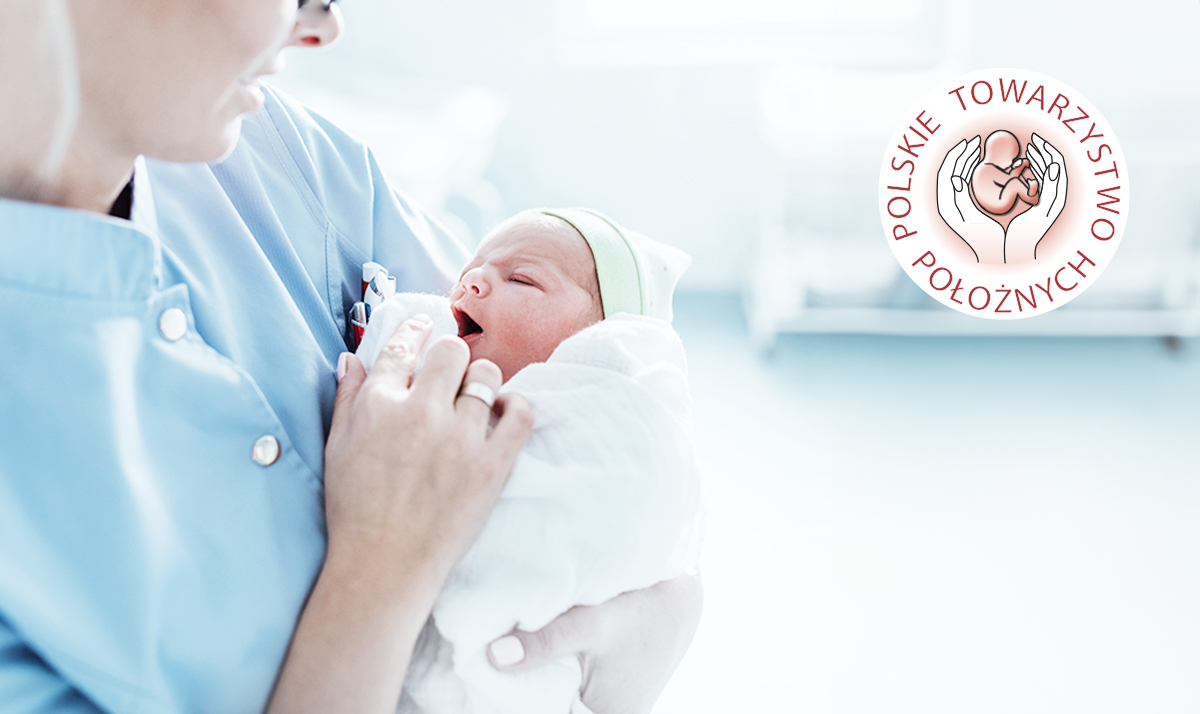The baby’s skin is prepared to fulfill its protective function, but it is not
fully formed, making it extremely delicate and sensitive to external factors. It differs significantly in structure from adult skin. The loose arrangement of the cells of the stratum corneum, the weaker adhesion of the epidermis to the dermis and a pH close to neutral make it less protected against microorganisms, as well as more susceptible to injury. In children under 3. year of age, the skin dries out faster and loses water because it is thinner and the epidermis is more permeable. The ratio of the baby’s skin surface area to body weight (700 cm3 /kg), affects the greater absorption of care and treatment preparations. The skin is a complex ecosystem that consists of various microbial communities and is important in protecting against infection and the penetration of toxic agents from the environment. Microbial colonization of the newborn’s skin affects its homeostasis and significantly contributes to the maintenance of normal development of immune function. The infant’s relatively unstable skin microbiome also makes it susceptible to inflammatory conditions such as eczema
and diaper dermatitis, as well as to opportunistic pathogens and allergens from the environment.
These specific conditions in the structure of the skin mean that it requires special care. Health care professionals, who are in contact with parents in their daily practice
, should provide information on proper care of the baby’s skin in an accessible way, as mistakes in care result in the occurrence of irritation
and predispose to the development of certain skin diseases.
Fortunately, fewer and fewer baby skin care mistakes are being made, and this is due to improved accessibility to prenatal education and to materials developed by experts. On the other hand, it is important to keep in mind that knowledge in the field of baby skin care is developing at a rapid pace and what was current yesterday may seem like an archaism today. In addition, more and more skin care products are available, both for direct skin care
in the form of cosmetics and for indirect skin care of newborns in the form of
clothes washers.
The most common mistakes in skin care:
- The use of care products not in accordance with their age registration;
- The use of preparations other than those containing emollients designed for atopic skin – in the newborn period – in the case of a child with a family history of atopy;
- suggesting advertisements in the public information media when choosing the right care product;
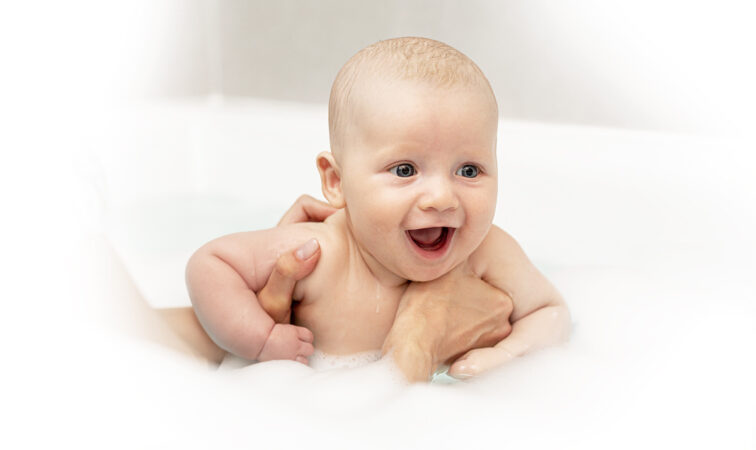
Bathing
Around child care, many myths have grown up over the years, but also the recommendations of expert groups or scientific societies have changed. The first point of contention concerns bathing the newborn after birth and in the following days/months of life. The World Health Organization WHO and the Experts of the American Academy of Pediatrics and the Polish Society of Neonatology recommend that the baby’s first bath be performed 6 hours after birth. Indications for early bathing in a newborn in good clinical condition are epidemiological reasons, such as a mother infected with HIV, HBs, suspected amniotic inflammation. Some hospital facilities have internal recommendations indicating that the first bath should be performed at home after discharge from the hospital.
During this time, the baby’s skin adapts to the environment, acquires antimicrobial properties and supports the body’s immune function.
In the first months of a baby’s life, bathing should be done 2-3 times a week. Daily toileting of the face, eyes, mouth, buttocks and flexion areas is mandatory. After bathing, dry the baby’s skin by wrapping the entire body in a warm gentle towel, it is important to thoroughly dry the skin in the bends of the body to prevent flare-ups. The idea that children can be washed with ordinary soap as for an adult was wrong. Today we know that the alkaline pH of soaps classically designed for adults has a strong irritating effect and damages the skin barrier in a child.
Another recommendation that has changed over the years is the care of the baby’s skin after bathing. Newborns with healthy, smooth skin do not require additional skin care. On the other hand, newborns with dry, flaky, atopic-lesioned skin should be treated with emollients to maintain proper hydration.
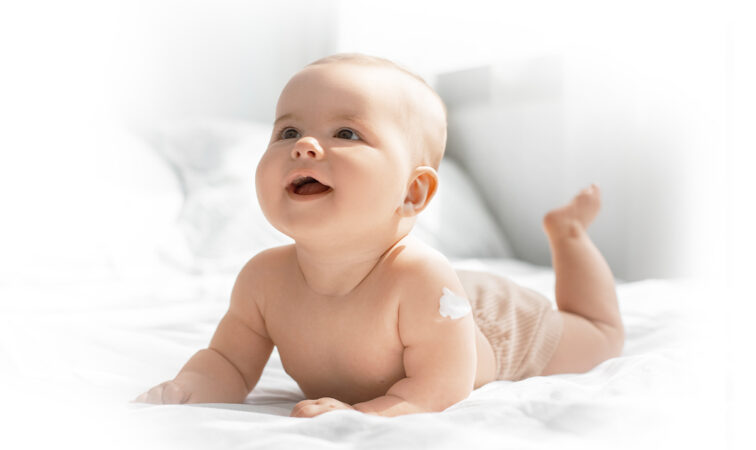
What to do when a child has dry skin?
- It is recommended to take a bath once a week to protect the skin’s lipid mantle;
- Gentle care products should be used for care,
- Cosmetics with neutral or slightly acidic pH, certified safe for use from 1.
day of life; - cleansers should cleanse the skin, moisturize, prevent water loss, but not destroy the lipid mantle;
It is not true that olive oil or coconut oil can effectively replace
cream for baby skin care.
Both of these preparations can be comedogenic
(that is, they clog pores), and due to their high content of oleic acid, they lead to excessive dryness of the skin with prolonged use.
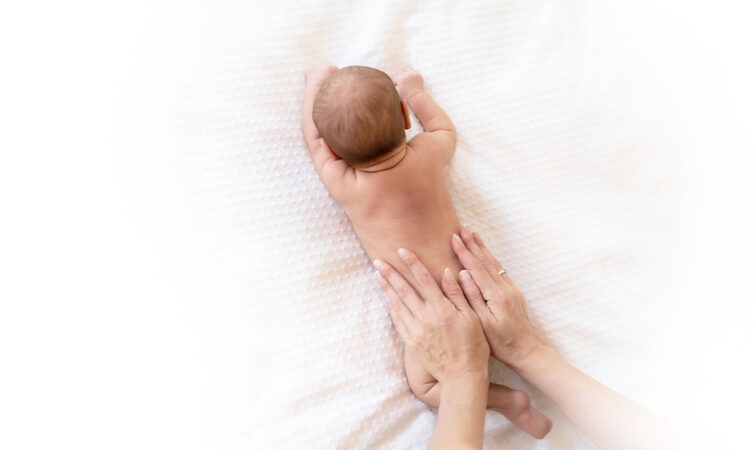
Care of the perianal area
Although recommendations for daily bathing of children have changed, it should be emphasized that in both newborns and infants the perianal area should be washed even several times a day. If the child has no irritation, wipes with as much water content as possible will suffice – they are very convenient. However, it is necessary to choose them well for the baby’s skin.
DO NOT use wipes with alcohol content. However, if the child has diaper dermatitis, it is better to wash the bottom with clean, warm water. After that, gently pat it dry (touching, not rubbing) and rub it with anti-burn cream or ointment. The bottom cannot be left “dry.” It must have protection preferably from a cream against the components of urine and stool.
And there comes another prohibition: DO NOT apply powders, salves and olives to a baby’s skin at the same time. Such a combination results in the formation of clumps, which adhere tightly to the skin and cause damage.
Potato meal, which has been used for years, is also not recommended. The current view is that instead of treating flare-ups, it can make them a bigger problem. And if the child has a healthy bottom skin, bring them into existence. After sprinkling potato flour on the baby’s buttocks under the influence of moisture (which is easy to find
under a diaper), a barrier will form, making it difficult for the skin to breathe. From there, it’s only a step to troublesome irritation, which can result in diaper dermatitis.
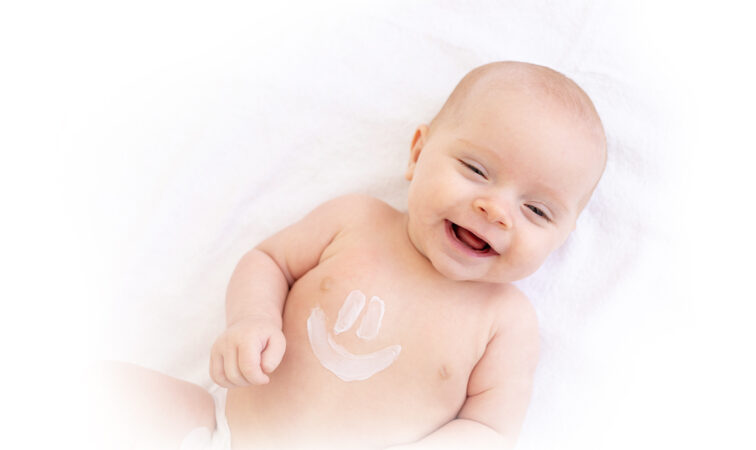
Is intimate area care different for girls and boys?
Care of the intimate area in girls is more difficult than in boys.
In girls, the close proximity of the location of the urethral outlet, vagina and anus is conducive to urinary tract infections, so special attention should be paid to the hygiene of the intimate area. In washing girls, the direction from top to bottom applies, so we start by cleaning the labia and only then the anal area. When bathing boys over the age of one, we try to slightly retract the foreskin. Important! Do not pull it away by force, as it is easy to damage it and cause pain at the same time. Only boys over the age of 3 should be shown how to slide the foreskin down and wash the glans.

Disposable or reusable diapers?
The last dilemma concerns the use of diapers-disposable or reusable? Undoubtedly, an infant should be changed about 5 times a day, and a newborn even
several times more (including at night). Disposable diapers are more preferred because they absorb moisture, so the skin is not exposed to the adverse effects of the components contained in urine, remains dry, and can “breathe.” However, it is necessary to change them frequently, without waiting for them to “fill up”. Every time you change a diaper, remember to wash your buttocks and genitals thoroughly. Before putting on a diaper, the bottom and its area must be thoroughly dried, in case of redness or irritation, use a specialized preparation for flare-ups.
Summary
Finally, it should be emphasized once again that a baby’s sensitive skin requires appropriate and gentle handling. And here, too, it is worth pointing out a few skin myths that seem baffling to professionals, no less
in certain circles may still be at work:
- The baby’s skin does not hurt, that is, it does not require delicacy in care;
- The child’s skin does not itch, which means antipruritic treatment is not necessary;
- Starch is good for all varieties of skin inflammation;
- practically every variety of inflammation in the child is due to food allergies, there is no need to focus on proper skin care;
- Elimination diet can cure atopic dermatitis, skin care is not needed ;
- One care product for the whole family.
Dr. Beata Pięta, prof. UM

